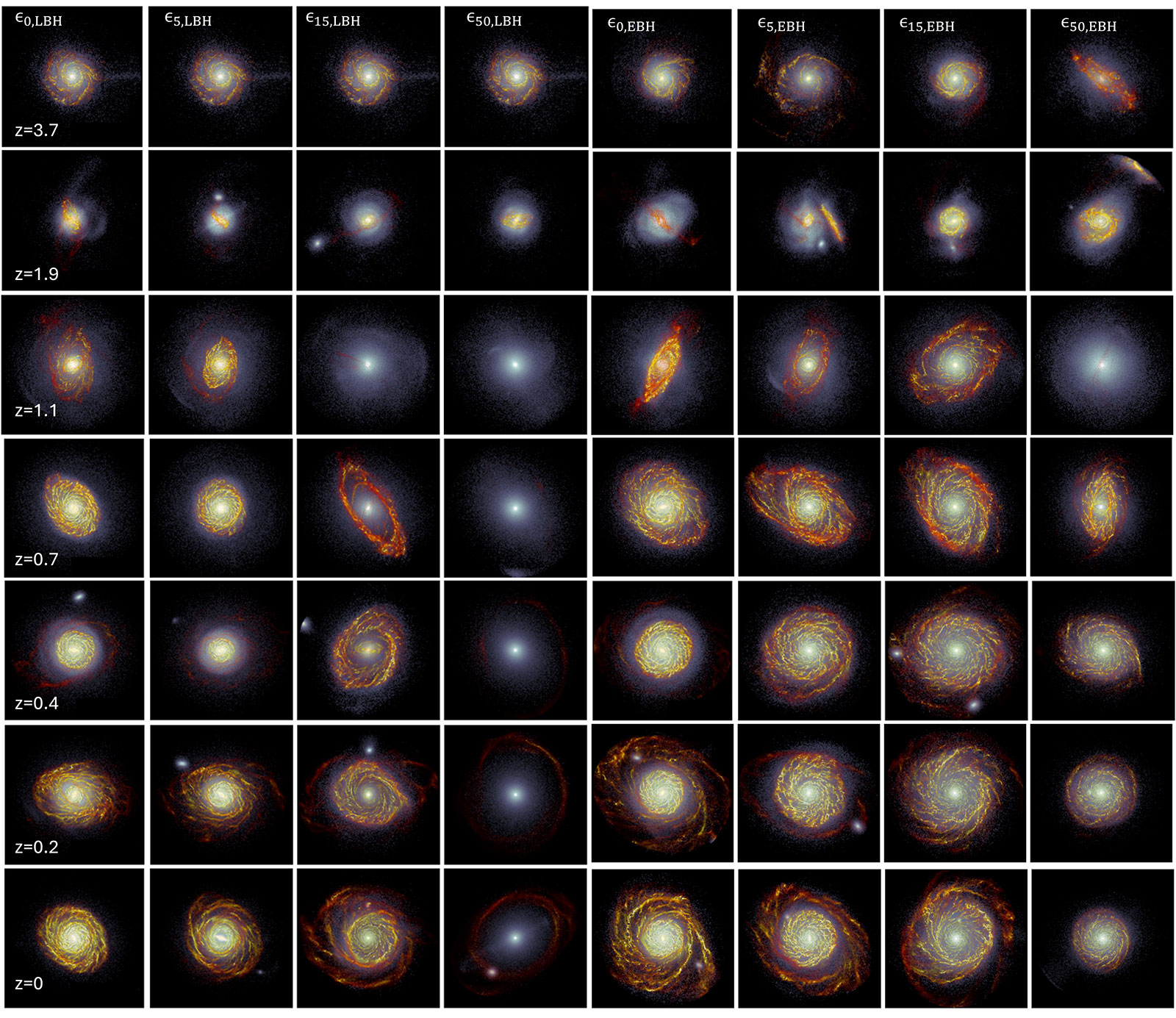News
SDSC Expanse Helps Researchers Better Understand Black Holes in Seyfert Galaxies
Published August 14, 2025
By Kimberly Mann Bruch

Deep in the heart of every galaxy lies a supermassive black hole – often more than a million times more massive than our sun. For decades, astronomers have studied how these cosmic giants influence the neighborhoods around them. Now, Julianne Goddard, a graduate student at the University of Kentucky (UK) Department of Physics and Astronomy, has led a study that further validates a surprising answer: black holes don't just devour matter, they actively sculpt the very structure of their host galaxies.
Using simulations run on the Expanse system at the San Diego Supercomputer Center (SDSC) at University of California San Diego School of Computing, Information and Data Sciences, Goddard has been focused on studying Seyfert galaxies — a type of galaxy with particularly active supermassive black holes at their centers. What she discovered deepens our understanding of how galaxies grow and evolve.
The key to this discovery lies in understanding jets — narrow beams of high-energy particles that shoot out from the vicinity of supermassive black holes at nearly the speed of light. Think of these jets like cosmic fire hoses that blast material across thousands of light-years of space.
“We used U.S. National Science Foundation allocations on Expanse to study something that may seem unexpected: rather than simply destroying everything in their path, these powerful jets actually alter the way stars form in the galaxies they traverse,” said Goddard, a graduate student in UK’s Department of Physics and Astronomy. “My colleagues and I found that the stars that form under the influence of these jets have a different distribution both in their ages and where they reside in the galaxy.”
Goddard said that this change in the star formation activity has profound consequences for the galaxy's structure, particularly its stellar disk — the rotating ring of stars and gas that forms the backbone of spiral galaxies like our own Milky Way.
“Our work showed that galaxies with active jets tend to develop more extended stellar disks over time, fundamentally altering their architecture,” Goddard said. “The most intriguing effects occurred in the outer regions of these stellar disks, an area that has become a hot topic in galactic research due to its importance in understanding how galaxies evolve.”
The team’s finished work simulated the complex feedback mechanisms between jets and their host galaxies, modeling everything from gas distribution to dark matter components. By comparing simulations of Milky Way-type galaxies both with and without supermassive black holes, the researchers isolated the specific effects of these cosmic engines and found that the jets heat gas in and around the galaxy generating propagating shocks where gas is ‘swept up’ in expanding ‘bubbles’ of hot over-pressured gas. While the existence of these ‘bubbles’ is well known, the researchers found that they can have a dramatic impact on star formation through their influences on the galaxy and its environment.
“Our work also highlighted a crucial relationship between black hole activity and a galaxy's ability to form new stars,” Goddard explained. “In some cases, heightened activity from the galaxy's central nucleus correlated with situations where star formation completely ceased—suggesting that black holes can both nurture and sterilize their galactic homes.”
Despite the prevalence of supermassive black holes capable of producing detectable jets, the exact mechanisms by which these jets accumulate and channel their enormous energies remain largely mysterious. This study represents a significant step toward unraveling these cosmic puzzles.
The implications extend far beyond this individual galaxy. By understanding how supermassive black holes shape galactic structure, environment and star formation, Goddard said that astronomers can use this work to better comprehend the integrated effect that Seyfert jets exert on their hosts over the age of the Universe. These cosmic architects have been sculpting the cosmos for billions of years, influencing the intricate web of galaxies we observe today.
This work has been published in the Astrophysical Journal.
The National Science Foundation ACCESS (allocation no. PHY230135) funded the computational work on Expanse at SDSC.

